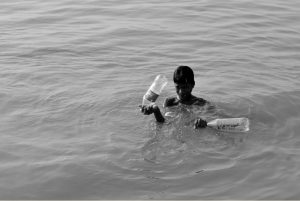Eluru, a town in the south of India, which was swept by a “mystery disease” last week, is limping back to normal. Most of the over 600 people who were hospitalized for medical treatment have recovered and been discharged. The disease has claimed the life of only one person so far. The worst of the crisis appears to be over and no new cases have been reported over the last couple of days.
Still, there is little clarity yet on what caused the outbreak or why it erupted so suddenly.
And public panic over the mystery disease has not subsided. Many of Eluru’s residents are reported to have fled the town. Others have stopped purchasing vegetables and are drinking only bottled mineral water.
The crisis erupted on the evening of December 5 when people began streaming into hospitals in Eluru, complaining of severe headache, nausea, giddiness, convulsions and loss of consciousness. Unable to figure what had afflicted the patients or the cause of the disease, doctors were treating patients for their symptoms. Fortunately, that worked and most patients were discharged after a few hours of treatment.
The mystery disease struck Eluru at a particularly difficult time – India and the world are battling the COVID-19 pandemic and Andhra Pradesh, the state where Eluru is located, has registered the third highest number of cases in the country with over 875,000 coronavirus infections so far. Already under the pressure of pandemic, Eluru’s health facilities were unable to cope with the additional burden of the mystery disease. Several patients had to be moved to hospitals in nearby cities.
Experts from the World Health Organization and India’s leading medical and scientific institutions as well as laboratories are investigating the cause of the disease. Preliminary investigations pointed in the direction of organochlorine substances, which are found in pesticides used in agriculture and anti-mosquito fogging. The use of the pesticide dichlorodiphenyltrichloroethane, better known as DDT, is banned in many countries and while its use in agriculture is prohibited in India, it continues to be used extensively in mosquito fogging.
High levels of lead and nickel have been found in blood samples of patients suffering from the disease, according to a preliminary investigation by the All-India Institute of Medical Sciences (AIIMS). Three patients are reported to have lead levels of 83.4, 53.6 and 53.5 micrograms per deciliter.
If it was lead and nickel that caused the disease, how did it enter people’s blood streams?
The high levels of lead found in patients’ blood reports is reportedly found only in those who have “occupational exposure” to the metal. But none of the patients work in units that deal with lead. Some studies have blamed contaminated water. However, people who drank bottled mineral water too fell ill.
Local officials have ruled out lead and nickel contamination through air and water and are probing the possibility of poisoning through fruits, vegetables and fish. Leafy vegetables and fish are known to accumulate large amounts of metal, pesticides and chemicals through a process of bioaccumulation. This could have facilitated the transmission of the heavy metals to humans, researchers say.
As answers begin to trickle in, the mystery over the disease’s cause is deepening.
Contamination of water in India, whether due to presence of fecal coliform or toxic chemicals and heavy metals, is not a new problem. Untreated sewage and industrial waste flow into all of India’s rivers and water bodies.
A recent Monthly Progress Report by the Delhi Pollution Control Committee found that at eight of the nine locations in New Delhi, the Yamuna river had unsafe levels of fecal coliform. At one location, i.e. at ITO Bridge in central New Delhi, fecal coliform level was, alarmingly, 660 times more than what is considered to be safe.
A study of water samples from major Indian rivers conducted by the Central Water Commission from May 2014 to April 2018 found that 65 percent of the samples were polluted by heavy metals including iron, lead, nickel, chromium and cadmium.
That fecal contamination of water sources is deadly is well known. Cholera is endemic in many states. Heavy metal contamination of water is known to be neurotoxic, leading to a range of muscular and neurological degenerative diseases.
Yet authorities have failed to act to reduce contamination of water.
Will the Eluru outbreak prompt them to initiate action?
































